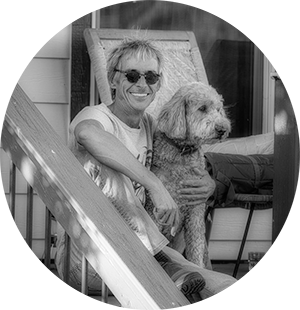
Shooting a Panoramic Scene
My Workflow
Location, Setup and Composition:
Time is of the essence when shooting blue hour, sunsets and sunrises, so I plan in advance whenever possible. When taking up to 100 frames, messing around 15 minutes before the event should never come into play. Hiking around during daylight hours is ideal, otherwise I plan to arrive an hour before the shoot.
With PhotoPills loaded, it’s pretty easy to take the sun or moon into account when setting a location for the tripod, and return to camp for the rest of the plan in the App, if necessary. I use AllTrails when scouting the ideal spot, dropping a pin for the tripod location, and using it to return to the precise location around 30 minutes before the shoot for the final camera and lens setup.
All camera equipment is cleaned in good light before setting out. I take 2 or 3 fully charged batteries, a couple of extra SD cards, and make sure any external devices (intervalometer, lighting trigger) are fully charged. No polarizer is attached to the lens, to avoid banding between the frames. I wear a red/white headlamp at night. The white light guides me to the tripod location. The red light is used once my eyes have adjusted to the darkness (around 10 minutes).
I set the tripod level the tripod as perfectly as possible. The ball-head does the rest of the job in conjunction with the camera’s built-in level. With the pan knob slightly loosened, I scan the scene with my lens selection to make sure I’m happy with the lens selection and the level is correct. This initial setup can take several minutes.
When shooting at two or more focal lengths (foreground and hyper-focal eg), I’ll do another pan to make sure your focus is consistent. If using a nodal rail to eliminate parallax, I’ll pay special attention to the foreground, adjusting nodal rail, if necessary.
If shooting two rows of exposures, I’ll shoot the top row first (the sky), as this is where the most movement will occur. The second row starts immediately below the last frame of the first row, working my way back to the starting point, and overlapping each frame by roughly 50%. I also use a rotator with detents to give confidence in the frame overlap.
For high contrast lighting conditions, I’ll take bracketed exposures (usually 3) per camera position to ensure highlights and darks are exposed for adequately, using the histogram to balance the primary exposure. I take a test shot in the zone that has the highest contrast, and check the histogram for each of the bracketed test frames to make sure there are no blowouts. If there are, adjust the bracket by a ½ stop and take another test shot. Repeat until the blowouts are eliminated. Once I’m happy with the camera settings, I shoot the composition as quickly as the shutter will allow.
Valley of The Gods, Utah
Will print up to 18ft wide
